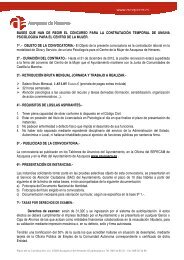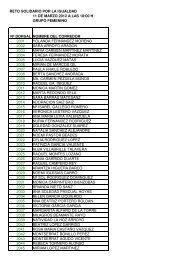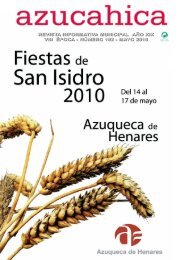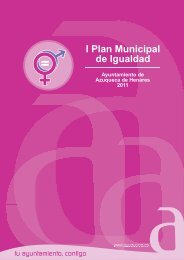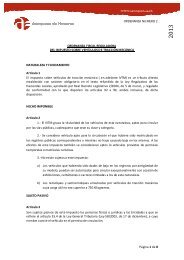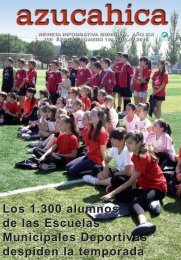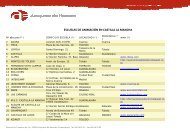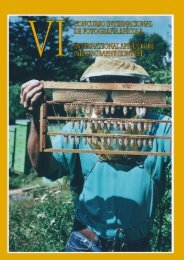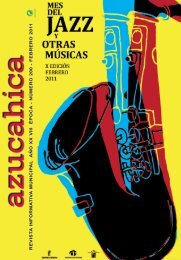VIII Concurso internacional de fotografía apícola, 2008, Catálogo
VIII Concurso internacional de fotografía apícola, 2008, Catálogo
VIII Concurso internacional de fotografía apícola, 2008, Catálogo
- No tags were found...
Create successful ePaper yourself
Turn your PDF publications into a flip-book with our unique Google optimized e-Paper software.
Título: "Cortín Val<strong>de</strong>bois - Asturias <strong>2008</strong>"Title:"Apiary Val<strong>de</strong>bois - Asturias <strong>2008</strong>141 - ERNESTO DÍAZAsturias - España - SpainUNA HISTORIA EN PIEDRA DE HUMANOS,ABEJAS Y OSOSEn el noroeste <strong>de</strong> la Península Ibérica, lapráctica <strong>de</strong> la apicultura ha tenido que hacerfrente a la <strong>de</strong>fensa <strong>de</strong> las colmenas ante la presencia<strong>de</strong> los Osos Pardos. Aún se conservannumerosos elementos en uso <strong>de</strong> las construcciones<strong>de</strong>fensivas para tal fin: son los Cortines.Los Cortines se localizan en la<strong>de</strong>ras solanas<strong>de</strong> áreas montañosas <strong>de</strong> Lugo y Ourense, don<strong>de</strong>se llaman Albarizas, y <strong>de</strong>l occi<strong>de</strong>nte <strong>de</strong>Asturias, León y Zamora. También frecuentes enalgunas zonas <strong>de</strong> Portugal, don<strong>de</strong> se <strong>de</strong>nominanSilhas o Muros Apiarios, son construccionesúnicas en el mundo, que sólo tienen un reflejoen los colmenares tapiados que aparecen en elValle <strong>de</strong> Roya, en el sureste <strong>de</strong> Francia. LosCortines suelen ser <strong>de</strong> planta circular y tienenmuros <strong>de</strong> entre 3 y 4 metros rematados por unalero. Pue<strong>de</strong>n albergar en algunos casos hasta100 colmenas tradicionales fijistas <strong>de</strong> tronco ahuecadoo <strong>de</strong> corcho, llamados Truébanos o Trobos.En Asturias existen otras construcciones,los Talameiros, también <strong>de</strong> carácter <strong>de</strong>fensivofrente a los osos. Los muy escasos y loca-- 150 -A STORY ABOUT HUMANS, BEES AND BEARSCARVED IN STONEIn the northwest of the Iberian Peninsulathe practise of beekeeping has had to facethe <strong>de</strong>fence of the hives in the presence ofthe brown bears. We still retain manyelements of the buildings in use for <strong>de</strong>fensivepurposes: they are cortines.Cortines are located on the sunny slopesof mountainous areas of Lugo and Ourensewhere they are called albarizas, and at thewestern coast of Asturias, Leon and Zamora.They are also common in parts of Portugal,where they are called Silhas or apiary walls,they are unique buildings which are only areflexion in walled apiaries that appear inthe Roya Valley at the southeast of France.The cortines used to be in a round positionand they have walls from 3 to 4 mts hightopped by a wing. They can house about100 traditional hives in a hollow or ma<strong>de</strong> ofcork trunk, they are called Truebanos ortrobos.In Asturias there are other buildings, theTalameros, they are also a <strong>de</strong>fensive forte



